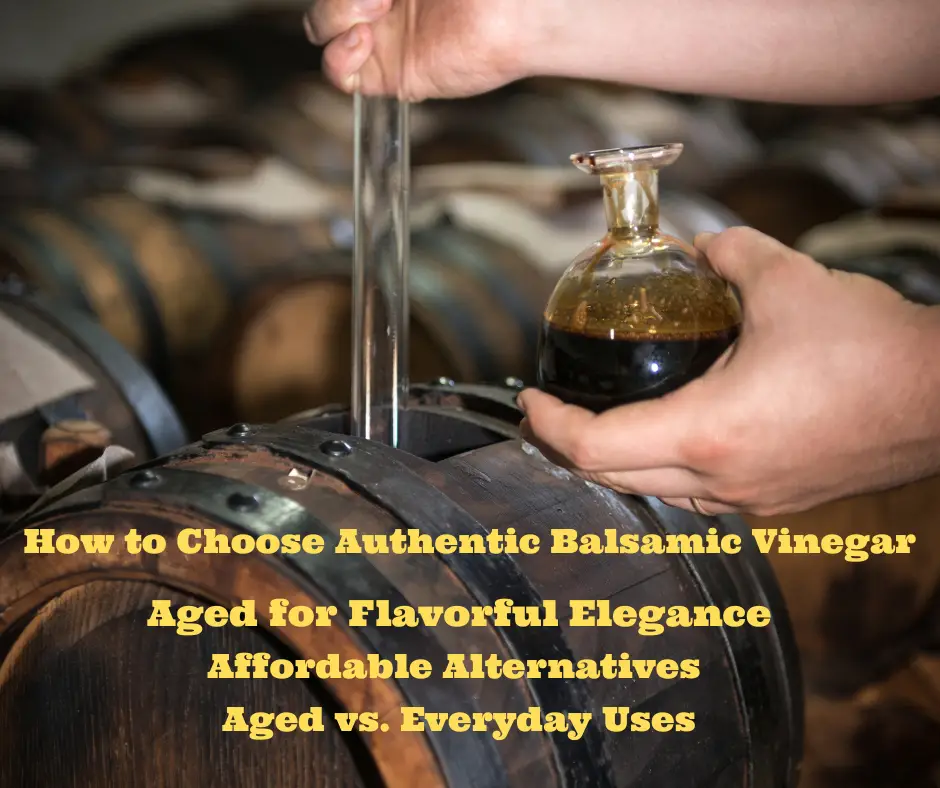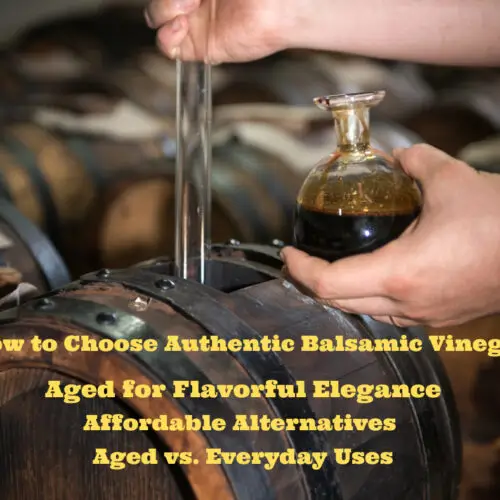Balsamic vinegar, celebrated for its deep, complex flavors and versatility, is a beloved staple in kitchens worldwide. However, with the increasing number of brands and varying qualities available, it’s often difficult to discern authentic balsamic vinegar from lower-quality imitations. This article will help you navigate the nuances of selecting true balsamic vinegar, highlighting appropriate uses for both expensive aged and less expensive versions, instructing you on how to read labels effectively, and emphasizing key ingredients to avoid, particularly caramel color.
Expensive Aged Balsamic Vinegar
Real balsamic vinegar, particularly the prestigious Aceto Balsamico Tradizionale di Modena, hails from Modena, Italy, and is known for its long aging process and robust flavor. Typically aged for a minimum of 12 years, some varieties mature for up to 25 years or longer. Here are some delightful uses for high-quality aged balsamic vinegar:
1. **Drizzling over Fresh Fruits**: Aged balsamic takes the sweetness of fruits like strawberries, figs, and peaches to a new level.
2. **Finishing Touch on Hearty Dishes**: Drizzle it over grilled meats or roasted vegetables just prior to serving for added depth.
3. **Cheese Pairings**: Aged balsamic complements rich cheeses like Parmigiano-Reggiano and creamy goat cheese.
4. **Salad Dressings**: Use it to create gourmet salad dressings that elevate everyday greens.
5. **Dessert Enhancements**: Aged balsamic is perfect for finishing dishes such as panna cotta or gelato, providing a beautiful contrast to sweet flavors.
The Affordable Alternative with a Seal
There are also high-quality balsamic vinegars that may not carry the prestigious price tag but still showcase exceptional quality. Look for balsamic vinegars labeled with a seal, indicating they are produced using traditional methods, and whose only ingredient is grape must. These products, though less expensive than their aged counterparts, offer a rich and authentic taste without the inflated price. While they might not be aged for as long, their simpler ingredient list ensures a genuine flavor that can still elevate a meal.
Less Expensive Balsamic Vinegar
On the other hand, more affordable balsamic vinegars, often labeled as “Balsamic Vinegar of Modena,” are made with a blend of wine vinegar and lesser-quality grape must. Here are some suggested uses for these varieties:
1. **Marinades**: They make a great addition to marinades, providing a tangy sweetness to meats and veggies.
2. **Cooking Base**: Use them in sauces and reductions, where a more subdued flavor is acceptable.
3. **Salad Dressings**: Although they lack complexity, they can still offer pleasant acidity when mixed with olive oil.
4. **General Use in Recipes**: Ideal for everyday dishes like salads, pasta, or roasted vegetables that don’t require a gourmet touch.
5. **Glaze for Vegetables**: Reduce them to create a simple glaze for drizzling over roasted or grilled veggies.
How to Read the Ingredient List
When selecting balsamic vinegar, knowing how to read the label effectively can save you from low-quality products:
1. **Look for ‘Tradizionale’**: This term signifies that the vinegar adhered to traditional production methods in Modena.
2. **Check for Grape Must**: A high-quality balsamic will list “grape must” as the first ingredient.
3. **Avoid Unrecognizable Ingredients**: Steer clear of vinegars that contain preservatives or artificial coloring agents.
4. **Aging Information**: Genuine aged balsamics often display their aging period—it should be at least 12 years to be considered authentic.
5. **Check for Certifications**: Look for PDO (Protected Designation of Origin) labels to ensure the vinegar meets high-quality standa

Taste Differences: Aged vs. Less Expensive Balsamic
The flavor profiles of expensive aged balsamic and less expensive alternatives also differ significantly. Aged balsamic vinegar boasts a dense, syrupy texture and a complex flavor profile, characterized by both sweet and tart notes that develop over years of aging. In contrast, less expensive balsamic vinegar tends to be thinner, with a more straightforward taste that may be primarily tangy, lacking the depth and nuance of its aged counterpart. This distinction is vital; the intense flavors of high-quality balsamic can transform a dish, while a cheaper version may serve a more utilitarian role without significantly enhancing the overall taste.
What to Avoid: Caramel Color
A significant red flag to watch for when selecting balsamic vinegar is the addition of caramel color. Authentic balsamic vinegar derives its natural richness and dark hue from the aging process and high-quality grape must. If you encounter a product that includes caramel color, this indicates artificial coloring, which likely masks the absence of quality ingredients. Such products should be avoided at all costs.
How to Choose Authentic Balsamic Vinegar
Ingredients
- Mazzetti L'Originale Organic Balsamic Vinegar of Modena, Organic & Aged, 3 Leaf, 8.45 Ounce
- Giusti Premium Balsamic Vinegar of Modena IGP – 3 Gold Medals, Matured in a Historical Collection of Wooden Barrels – Italian Gran Deposito Aceto Balsamico Di Modena – 8.45 fl oz
- Balsamic Vinegar of Modena 8.45 fl.oz. (250ml), IGP-Certified Dense Balsamic Vinegar with a Bold, Sweet-and-Sour Taste – Product from Italy


